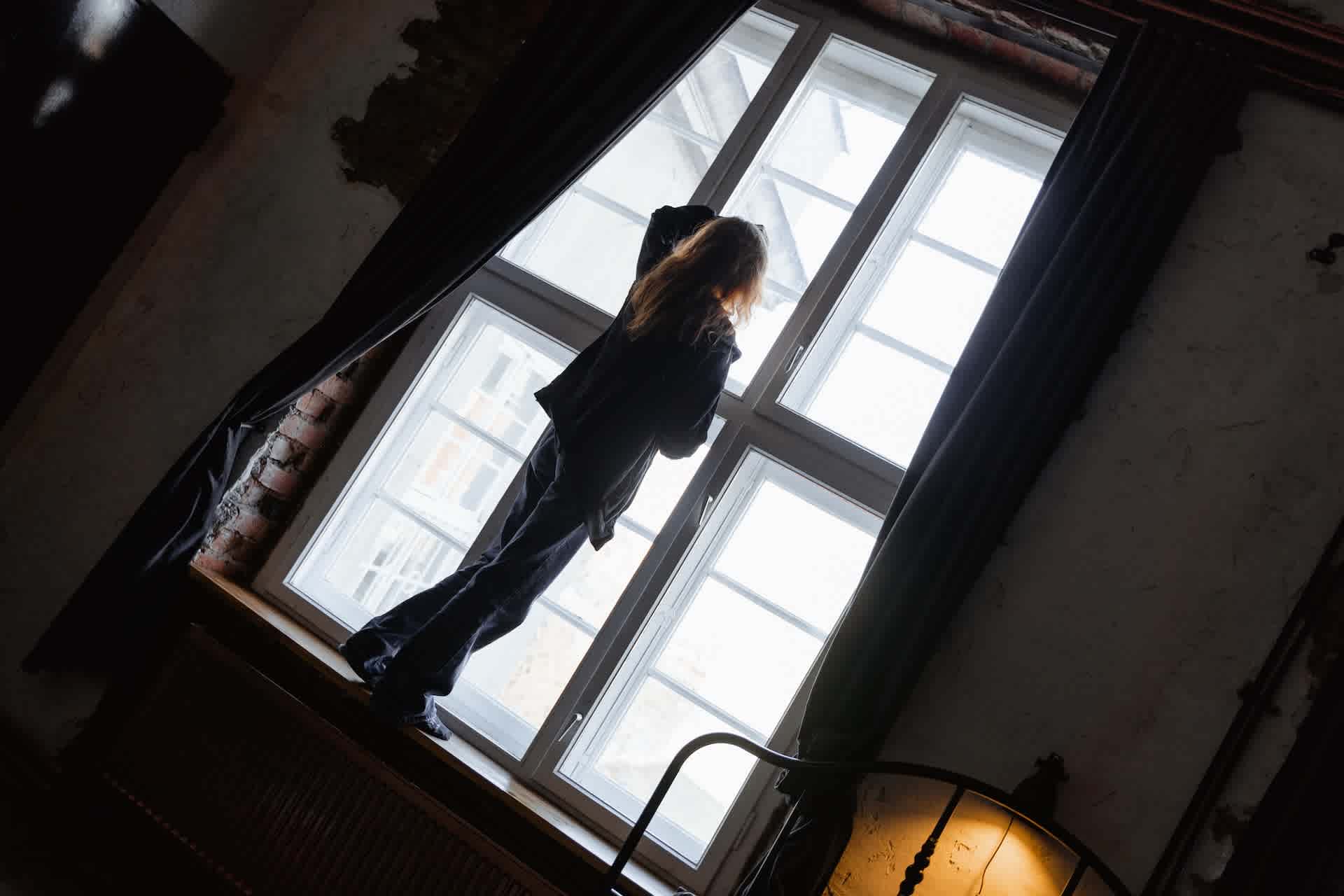Learn / Bipolar Disorder I vs. II: Understanding the Difference
Bipolar Disorder I vs. II: Understanding the Difference


November 13th, 2023| Clinically Reviewed by
Key Points
- In bipolar I, manic episodes alternate with depressive episodes.
- In bipolar II, hypomanic episodes are less intense, but depression is more frequent.
- Treatment for both disorders may combine medication and talk therapy.
Bipolar disorder is a mental health condition characterized by extreme mood swings that impact your energy levels and activity patterns. There are 2 primary subtypes: bipolar I and bipolar II, each with its distinct characteristics. Understanding the differences between bipolar I vs. bipolar II is crucial for effectively diagnosing and managing this disorder so you can find a path to stability and emotional well-being.
Let’s look at the differences between these 2 subtypes: their symptoms, effects on daily life, and treatment options.
Types of Bipolar Disorder
Bipolar disorder is a complex mental health condition characterized by extreme shifts in mood, energy, and activity levels. While there are several types of bipolar disorder, each shares the common feature of these mood swings.
Here’s a general overview of the most common types:
Bipolar I Disorder
Bipolar I disorder entails manic episodes,1 which are periods of heightened energy, intense euphoria, and impulsive behavior. These episodes of mania often alternate with depressive episodes, which are marked by overwhelming sadness, fatigue, and a loss of interest in activities your normally enjoy. People with bipolar I disorder may experience severe manic episodes that can lead to psychosis, during which they lose touch with reality.
The swings between manic and depressive states can be dramatic and disruptive to daily life. If you’re concerned that you might have bipolar, it’s important to get an accurate diagnosis so you can start to treat it effectively.
Bipolar II Disorder
Bipolar II disorder differs from bipolar I in the severity and duration of manic episodes. In bipolar II, people experience hypomanic episodes,2 which are less extreme than full-blown manic episodes. While hypomania may include increased energy and creativity, it’s typically less disruptive and intense than mania. People with bipolar II tend to be depressed more often, which can cause emotional distress and impair your ability to function. Accurate diagnosis and treatment are essential for managing the cycle between hypomania and periods of depression. Untreated bipolar II can significantly impact your day-to-day life.
Cyclothymic Disorder
Cyclothymic disorder is a milder form of bipolar disorder3 marked by chronic mood disturbances. Unlike bipolar I and II, cyclothymia involves less severe mood swings. But it is chronic, and usually lasts for at least 2 years in adults. People with cyclothymia cycle through recurrent periods of hypomania and depressive symptoms. And while the mood swings in cyclothymia aren’t as extreme as in other forms of bipolar, they can still disrupt your daily life and relationships. It’s important to note that cyclothymic disorder can progress into bipolar I or II if left untreated,4 making early intervention and treatment vital for long-term well-being.
Is Bipolar Disorder I More Severe Than Bipolar Disorder II?
One of the common questions people have about bipolar disorder I vs. II is which type is more severe.
The distinction between these 2 disorders has to do with the intensity of manic episodes. People with bipolar disorder I experience full-blown manic episodes,5 which can be more extreme, disruptive, and potentially lead to psychosis, making it crucial to receive timely treatment. While bipolar disorder II is sometimes considered a milder form of bipolar, it can still significantly impact your life due to the frequency of major depressive episodes. The severity of either disorder depends on a number of factors, including your specific experiences and the degree to which your symptoms interfere with your daily functioning.
Both bipolar I and II can cause significant challenges in managing emotions, relationships, and daily life. What matters most is that you receive the right treatment to address your specific needs—whether it’s mood stabilization, therapy, medication, or a combination of approaches. With quality care and support, people with any type of bipolar disorder can achieve stability, manage their symptoms, and lead fulfilling lives.
Explore Bipolar Treatment Centers
What Is the Difference Between Bipolar I and Bipolar II?
Bipolar I and bipolar II are distinct subtypes of bipolar disorder. While they share similarities, they differ in critical ways.
Mania vs. Hypomania
One of the primary distinctions is the nature of manic and hypomanic episodes. In bipolar 1 disorder, people experience manic episodes of intense euphoria, impulsivity, and heightened energy. These episodes are often severe, disruptive, and can even lead to psychosis in some cases, which requires hospitalization.
Bipolar II disorder features hypomanic episodes, which are milder and shorter than mania. While hypomania also involves increased energy, it’s generally less intense and disruptive to daily life. Hospitalization due to hypomania is rare. In fact, according to the DSM-5 criteria for hypomanic episodes,6
“The episode is not severe enough to cause marked impairment in social or occupational functioning or to necessitate hospitalization. If there are psychotic symptoms, the episode is, by definition, manic.”
Impact on Daily Life
The impact on daily life also varies between these 2 subtypes. Bipolar I tends to have a more significant impact because of the severity of manic episodes, which can lead to reckless behavior and seriously impair functioning. The depressive episodes that follow can be equally debilitating.
In bipolar II, the impact on daily life stems from more prevalent and longer-lasting depressive episodes. Although people with hypomania may behave impulsively, it’s typically less disruptive than full mania.
Differences in Bipolar Disorder Symptoms: I vs. II
Bipolar disorders I have some symptoms in common, like depressive episodes. But their main distinction is the severity and nature of manic or hypomanic symptoms. In bipolar I disorder, people experience full-blown manic episodes which are often followed by profound depressive episodes. Bipolar II disorder features hypomanic episodes and more frequent depressive episodes.
The main distinction between bipolar disorder I vs. II is the presence of either mania or hypomania:7
Mania Symptoms
- Elevated or irritable mood
- Racing thoughts
- Less need for sleep
- Heightened energy and restlessness
- Impulsivity and poor judgment
- Grandiosity or inflated self-esteem
- Engaging in risky behaviors (e.g. excessive spending or substance abuse)
- Talkativeness and rapid speech
- Difficulty focusing
- Agitation and irritability
- Hallucinations or delusions (in severe cases)
- Disorganized thinking and behavior
Hypomania Symptoms
- Elevated mood or increased happiness
- Increased creativity and productivity
- Enhanced energy and motivation
- Reduced need for sleep without feeling fatigued
- Increased talkativeness and sociability
- Heightened self-confidence and self-esteem
- Mild impulsivity (usually without severe consequences)
- Improved focus and attention
- A sense of optimism and positivity
- Increased goal-directed activity
- More engagement in pleasurable activities
- Generally less severe and disruptive than full manic symptoms
Bipolar I vs. II Treatment
While bipolar disorder 1 and 2 share certain treatment approaches, they also have different considerations based on the nature of manic or hypomanic episodes. Both subtypes of the disorder usually involve a combination of medication and talk therapy8 to manage symptoms and promote stability.
Medication
In general, treatment for both bipolar I and II includes mood stabilizers, such as lithium, anticonvulsants, or atypical antipsychotic medications, to help regulate mood swings. Bipolar I may require more intensive medication management and monitoring due to the severity of manic episodes and the potential for psychosis.
Talk Therapy
Psychotherapy plays a crucial role in teaching people living with bipolar disorder coping skills, how to recognize triggers, and strategies to manage mood episodes. Mental health professionals often use approaches like cognitive behavioral therapy (CBT) and psychoeducation with this disorder.
Lifestyle Changes
Changes to daily routines, like maintaining a regular sleep schedule, reducing stress, and avoiding alcohol and drug use, are also essential to recovery.
While treatment approaches for both bipolar type 1 and 2 have similarities, it’s essential that your provider tailors your care to your specific symptoms and needs. Accurate diagnosis and an individualized treatment for bipolar disorder plan can help you effectively manage your bipolar disorder—and, ultimately, help you enjoy life.
Find Bipolar Disorder Treatment Centers
Living with bipolar disorder is challenging, but a comprehensive treatment program and ongoing support can help you do so in the best way possible. Finding the right provider is the first step towards a better life: search for bipolar disorder treatment centers that match your criteria, including location, insurance accepted, and more.
Frequently Asked Questions About Bipolar Disorder I vs. II
What are the common types of bipolar disorder?
Bipolar disorder includes several types, with bipolar I and bipolar II being the most common. Bipolar I features full manic and depressive episodes, while bipolar II involves less severe hypomanic episodes and depressive episodes. There’s also cyclothymic disorder, which is milder but chronic.
What are the key differences in symptoms between bipolar disorder I and bipolar disorder II?
The main difference lies in the nature of manic or hypomanic symptoms. Bipolar I involves full-blown mania with severe symptoms, while bipolar II features hypomania, which is less intense. Depressive episodes are also more frequent in bipolar II. Both subtypes usually require mood stabilization medication and psychotherapy.
How is bipolar disorder I vs. bipolar disorder II treated?
Treatment for both bipolar I and bipolar II often includes mood-stabilizing medication and talk therapy. Working with a treatment team to get an accurate diagnosis and create an individualized treatment plan is crucial for managing bipolar so you can live a healthy fulfilling life.
-
Bipolar I Disorder - an Overview | ScienceDirect Topics. https://www.sciencedirect.com/topics/neuroscience/bipolar-i-disorder. Accessed 20 Oct. 2023.
-
https://www.sciencedirect.com/topics/medicine-and-dentistry/hypomania
-
What Are Bipolar Disorders? American Psychiatric Association. https://www.psychiatry.org/patients-families/bipolar-disorders/what-are-bipolar-disorders
-
“Cyclothymia: Symptoms, Diagnosis, Treatment, Triggers.” MedicineNet, https://www.medicinenet.com/cyclothymic_disorder/article.htm. Accessed 20 Oct. 2023.
-
Culpepper L. The diagnosis and treatment of bipolar disorder: decision-making in primary care. Prim Care Companion CNS Disord. 2014;16(3):PCC.13r01609. doi: 10.4088/PCC.13r01609. Epub 2014 Jun 19. PMID: 25317368; PMCID: PMC4195640.
-
Culpepper L. The diagnosis and treatment of bipolar disorder: decision-making in primary care. Prim Care Companion CNS Disord. 2014;16(3):PCC.13r01609. doi: 10.4088/PCC.13r01609. Epub 2014 Jun 19. PMID: 25317368; PMCID: PMC4195640.
-
“What Are the Differences Between Hypomania and Mania?” Verywell Health, https://www.verywellhealth.com/hypomania-vs-mania-5196831. Accessed 20 Oct. 2023.
-
Watkins, E. (2003). Combining cognitive therapy with medication in bipolar disorder. Advances in Psychiatric Treatment, 9(2), 110-116. doi:10.1192/apt.9.2.110
Return to Resource Library
Our Promise
How Is RehabPath Different?
We believe everyone deserves access to accurate, unbiased information about mental health and addiction. That’s why we have a comprehensive set of treatment providers and don't charge for inclusion. Any center that meets our criteria can list for free. We do not and have never accepted fees for referring someone to a particular center. Providers who advertise with us must be verified by our Research Team and we clearly mark their status as advertisers.

















